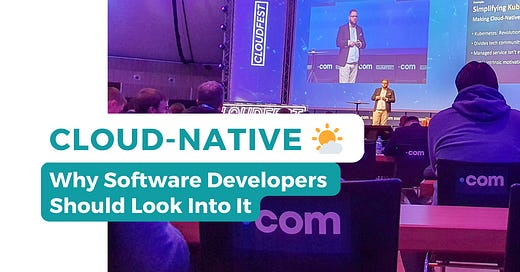Cloud-Native – Why Software Developers Should Look Into It
It helps us to focus on what matters.
In software development, we love to focus on what matters, hopefully creating value and pushing the envelope regarding business.
When speaking with other software engineers, especially those who consider themselves developers, they tend to avoid everything regarding IT or cloud operations.
I explain it to myself simply with their focus on design instead of automation. The typical software developer focuses on code, implementation of ideas, changes, and iterations—not so much on where the software will be run.
Software teams often have a “Definition of Done (DoD),” which they hand off to version control or a CI/CD pipeline. That’s it—something happens with the changes, and at some point, there comes feedback.
Take a look ahead
You need to look further than that to take full control and ownership of your development and part of the product. Nearly every Startup and most traditional small-to-medium-sized companies I know host and run their products in the “cloud,” or, more precisely, they consider running their applications cloud-native.
With my articles and videos, I have been very focused on development for the last few months, and since we are at CloudFest next week, I want to shed some light on the cloud again.
What is Cloud-Native?
Cloud-native applications or services are designed and developed to run in the cloud, leveraging cloud computing frameworks and technologies for greater scalability, flexibility, and resilience. This approach typically involves services (sometimes microservices), containerization, continuous integration and deployment (CI/CD), and dynamic orchestration.
Keep reading with a 7-day free trial
Subscribe to snackableCTO to keep reading this post and get 7 days of free access to the full post archives.




